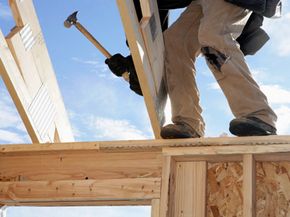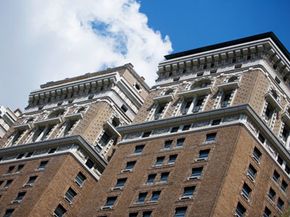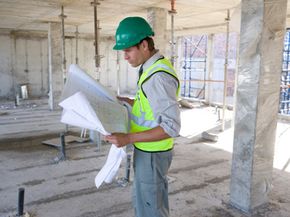
Key Takeaways
- Wood, brick, stone, concrete and iron/steel are five long-lasting building materials that have been used throughout history to construct durable structures, from ancient temples to modern skyscrapers.
- Each material has unique properties: wood is versatile and lightweight, brick is durable and weather-resistant, stone is impressively strong and can last for centuries, concrete is flexible and can be formed into various shapes, and iron/steel provides strong support for tall buildings.
- Despite their durability, these materials have limitations, such as wood's vulnerability to fire and termites, and stone's heavy weight and quarrying challenges. Yet they continue to be valued for their aesthetic and structural qualities in modern construction.
Around 10,000 years ago, man started to make fundamental changes in the way he lived. Slowly moving away from a nomadic lifestyle, he started staying in one place for longer periods. This was probably due to the ending of the last ice age creating more abundant resources. Man didn't have to travel as far to find food, so he stayed where food was plentiful. Over time, a more settled lifestyle brought some challenges with it. Instead of having to find caves or create makesift shelters from animal skins for protection from the weather, man started to look for more durable materials with which to build long-lasting dwellings [source: Castleden].
Over time, man has used a variety of materials, and they help to paint a picture of our ongoing quest to make long-lasting structures to meet our changing needs. The evolution of architecture meets those challenges and handles the cultural perception of what those buildings should look like and how they should be used.
Advertisem*nt
In the next few pages, we'll take a look at five materials that man has relied on to build homes, halls, temples and many other types of structures. All five are still used today, and knowing something about them will help us make the historic leap from mud huts and tents to skyscrapers that can shelter thousands.
First up, lets take a look at the ever-versatile building material of man and termites alike: wood.
Contents
- Wood
- Brick
- Stone
- Concrete
- Iron and Steel
5. Wood
As a construction material, wood has a lot going for it. It can be used as a primary material, as seen in log cabin construction or blended with other building materials and used as either a decorative element or support structure. Wood is lightweight compared to stone, and it's strong once it's been seasoned to remove moisture. It can also be cut to length easily.
Wood does have some disadvantages, though. It decays eventually, and it's vulnerable to moisture damage like dry rot and predation by insects like termites. Fire is a big problem, too.
Advertisem*nt
Even with these vulnerabilities, wood buildings can survive a long time. Just how long may surprise you. The oldest wood building in existence is the Horyu-ji temple in Japan, which dates to the 8th century [source: CWC].
In the next section, let's see how playing with mud can be a smart thing to do when you're trying to make bricks.
4. Brick

Usually made of clay, brick has been used in many ancient structures, like the Roman aqueducts, the Pantheon and the Great Wall of China. The Sumerians made the earliest recorded bricks, and we can deduce that those early bricks used in construction were crude, uneven, sun-dried blocks probably made of silt that was deposited when high waters receded after storms [source: Britannica].
The silt dried naturally to a very hard consistency, and then it was dug up, broken into chunks and used to make the walls of huts and other structures. Some experimentation led to the development of forms and molds to create uniform bricks that could be stacked easily for smooth walls with clean corners.
Advertisem*nt
This style of brickmaking is still being used today and is very stable in dry climates. But too much rain and the walls of your painstakingly built hut turn to mud. That's solved with the application of high heat. These bricks are durable, weather resistant, fire resistant, easy to make and convenient to work with.
In the next section, let's take a look at a building material for the ages, stone.
3. Stone
Stone is durable and impressive stuff, but it's also challenging to quarry, and heavy to move, and it has tension and stress limitations. Where there are resources available to excavate and cut it precisely, stone can be an extremely strong and useful natural material. Unlike brick, it can be stacked without mortar and support heavy vertical loads. Stone resists deforming, weathers the elements well, withstands fire and helps maintain stable interior environments. There are so many extraordinary stone structures that it seems a shame that modern construction uses stone more as decoration than anything else.
Today, there are cheaper and more efficient building materials that have usurped the position of stone in modern building construction, not the least of which are decorative stone veneers. It seems humbling, but steel, wood and concrete construction with a thin layer of decorative stone on the outside is more in keeping with modern budgets and standards of construction than the impressive, towering stone edifices of historical buildings. Newer synthetic materials are even mimicking the look of stone in much lighter weight, inexpensive incarnations, eliminating the need even for veneers.
Advertisem*nt
Stone is still popular for its esthetic value, and it's unlikely that it will ever be completely eliminated. Stone has probably been around since the first Stone Age settlers reached for a few rocks to hold down their tent flaps, and as a decorative element in human design, it's bound to be a part of our structures for a long time.
2. Concrete

Concrete is an aggregate made up of a number of materials like stones and sand that are mixed with a binder like cement and water. The mixture is then left to dry and harden. It's a flexible material that can be formed on the spot or poured into molds, hardened and then transported.
Even though it had been around for hundreds of years, it wasn't until 1860, when someone realized that concrete could be reinforced to increase its tensile strength (the amount of force or stress it could withstand), that concrete started gaining wide acceptance.
Advertisem*nt
Reinforced concrete can be formed into many shapes with a supporting structure of narrow steel rods embedded right in the concrete when it's poured. Rebar reinforcement makes concrete an ideal material for walls, beams, slabs, foundations, frames and many other applications. The use of metal rods and mesh, together with a relatively inexpensive concrete medium, make reinforced concrete a flexible, reliable and economical building choice.
Twentieth century refinements have made reinforced concrete an even bigger player in modern building design and construction. Pre-cast concrete is made under controlled manufacturing conditions that increase its water repelling characteristics and limit its capacity to expand and contract. Pre-stressed concrete, made by placing stretched steel strands in the hardening concrete, increase reinforced concrete's tensile strength and resistance to downward pressure.
Let's proceed to the next section, where we'll take a look at how steel is being used to do more than just reinforce concrete in building construction.
1. Iron and Steel
Once man started building up instead of out, stronger building materials became necessary to support taller structures. And tall buildings place a lot of weight on load-bearing walls; some sort of support framework was needed to carry the load.
We can see here that steel has a dual role in our builder's toolkit. It can be embedded in concrete to provide support or become a foundation in itself. Steel can easily be prefabricated to make for a fast and easy installation. It can be welded, bolted or riveted in place. It can be up to 100 percent recyclable, too, which is important with newer green building practices. Steel is a relatively economical commercial building choice which is making inroads in residential construction, as well.
Advertisem*nt
The advent of steel technology that allows man to design and build taller structures has changed the face of architecture and expanded the way we find creative solutions to our building challenges.
On the next page, you'll find lots more information about building and architecture.
Frequently Asked Questions
What are the main advantages of using wood in construction?
Wood's advantages include its light weight, ease of cutting and shaping, and its strength after seasoning, making it versatile for both structural and decorative uses.
How does reinforced concrete differ from standard concrete?
Reinforced concrete incorporates steel rods or mesh to increase its tensile strength, making it more suitable for structural applications like walls and beams.
Lots More Information
Related Articles
- When is using untreated lumber better?
- How to Make a Small Room Seem Big
- How Infrared Heaters Work
- Can home improvements decrease a home's value?
- Curiosity Project: 10 Natural Building Materials
Sources
- Balogh, Anne. "What Makes Concrete a Sustainable Building Material." Undated. 3/4/09.http://www.concretenetwork.com/concrete/greenbuildinginformation/what_makes.html
- Bellis, Mary. " The History of Concrete and Cement." Undated. 3/4/09.http://inventors.about.com/library/inventors/blconcrete.htm
- Castleden, Rodney. "Inventions That Changed the World." Chartwell Books, Inc. 2007
- Castleden, Rodney. "Events That Changed the World. Time Warner Books. 2005
- Craven, Jackie. "Viking Log Homes." Undated. 3/4/09.http://architecture.about.com/od/countriescultures/ig/Russia-Architecture/Novgrad.htm
- CWC. "Wood's Heritage." 6/08. 3/2/09.http://www.cwc.ca/DesignWithWood/Durability/Wood%20Heritage/?Language=EN
- CWC. "Advantages of Wood." 8/2/07. 3/2/09.http://www.cwc.ca/DesignWithWood/Durability/Wood%20Heritage/Wood%20Advantages?Language=EN
- CWC. "Durability Hazards of Wood." 8/2/07. 3/2/09.http://www.cwc.ca/DesignWithWood/Durability/Durability%20Hazards/?Language=EN
- Encyclopedia Britannica. "Architecture." Undated. 2/22/09.http://www.britannica.com/EBchecked/topic/32876/architecture
- Encyclopedia Britannica. "Brick and Tile." Undated. 2/22/09.http://www.britannica.com/EBchecked/topic/79195/brick
- Encyclopedia Britannica. "Building Construction." Undated. 2/22/09.http://www.britannica.com/EBchecked/topic/83859/building-construction/59318/The-second-industrial-age#ref=ref260154
- Encyclopedia Britannica. "Ishtar Gate." Undated. 3/5/09.http://www.britannica.com/EBchecked/topic/295381/Ishtar-Gate
- EuroCopper.com. "Copper in Architecture." Undated. 2/21/09.http://www.eurocopper.org/doc/uploaded/PK%20Copper%20Architecture%20Berlin%20EN%20final.pdf
- Glasssteelandstone.com. "The Taj Mahal." Undated. 3/5/09.http://www.glasssteelandstone.com/BuildingDetail/141.php
- Hvistendahl, Mara. "Is China's Great Wall Visible from Space?" 2/21/08.3/1/09.http://www.sciam.com/article.cfm?id=is-chinas-great-wall-visible-from-space
- Jeney, András Megyesi, "Ground of Sun-Dried Brick Construction." 12/10/03. 3/5/09.http://www.pp.bme.hu/ci/2003_1/pdf/ci2003_1_20.pdf
- Luminarium. "The Great Fire of London." Undated. 3/4/09.http://www.luminarium.org/encyclopedia/greatfire.htm
- Materials, Science and Technology. "History of Concrete - A Timeline." Undated 3/5/09.http://matse1.mse.uiuc.edu/concrete/hist.html
- McIvor, Alastair "What are Stone Circles." Undated. 3/5/09.http://www.geocities.com/athens/parthenon/6197/gen.htm
- Pirozzolo, Dick. "Log Home FAQs." Undated. 2/22/09.http://architecture.about.com/cs/buildyourhouse/a/aboutlogcabins_2.htm
